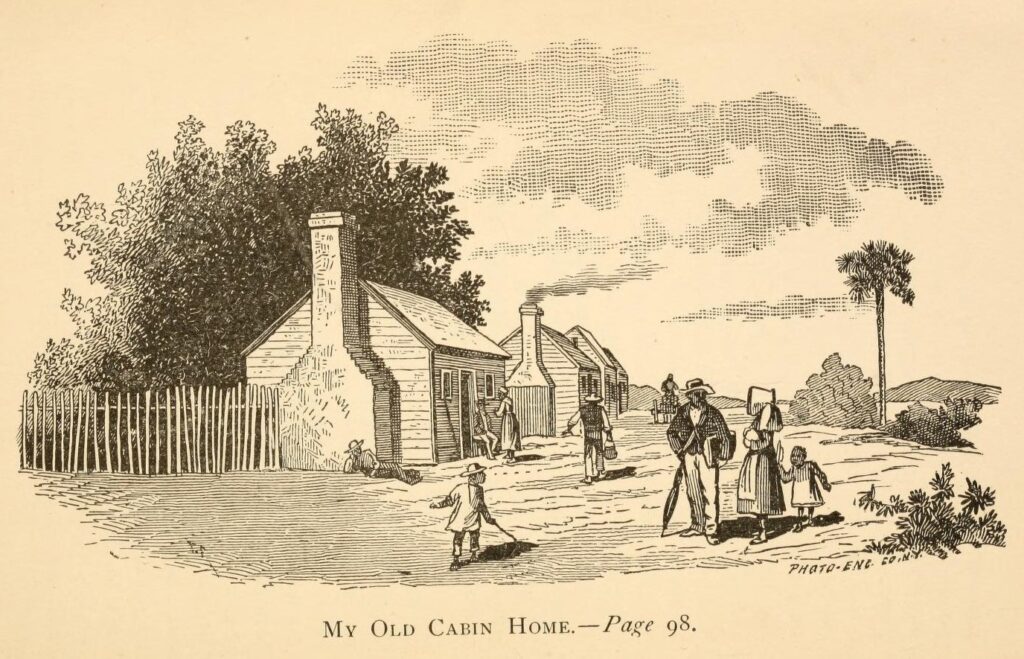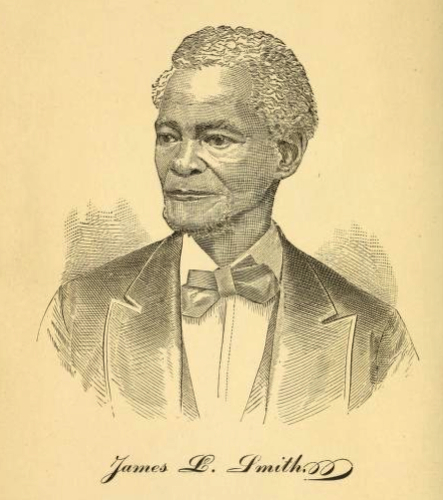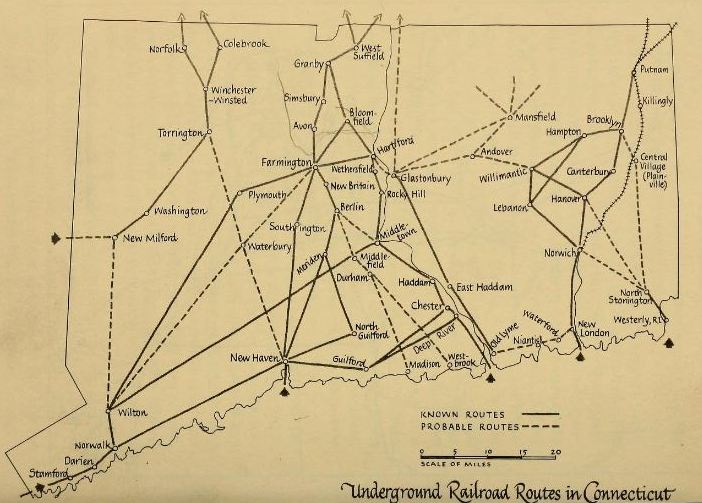Last Updated: May 2, 2024
By Nancy Finlay
In the years before the Civil War, the Underground Railroad enabled thousands of Americans of African descent to escape from slavery. In both the North and South, many people worked together to assist escaped enslaved people on the road to freedom. One of these freedom seekers was James Lindsey Smith, who fled slavery in Virginia to find a new life in Connecticut.
Smith’s Road to the Underground Railroad
Smith was born and enslaved on a plantation in Virginia’s Northern Neck around 1816. As a small boy, an accident left him injured and unfit to work in the fields, so he trained as a shoemaker. Throughout his training, however, thoughts of freedom preoccupied his mind. Smith later recalled in his autobiography, “From a child I had always felt that I wanted to be free.”
In the spring of 1838, Smith found a chance to escape in a canoe with two other enslaved men, Zip and Lorenzo. After stealing a larger boat, they sailed up the Chesapeake Bay, landing in Maryland. From there, they proceeded on foot towards Delaware. Being disabled, Smith soon fell behind, but continued onward and eventually rejoined his friends in New Castle, Delaware.
After the three young men purchased passage on a ship bound for Philadelphia, Zip and Lorenzo signed on as sailors on an Europe-bound ship, once more leaving Smith on his own. He met a Philadelphia abolitionist and fellow shoemaker named Simpson, who took him home and gave him supper and a room for the night. Smith had reached the Underground Railroad.
How the Underground Railroad Operated
The Underground Railroad was a network of safe houses operated by anti-slavery activists to help freedom seekers from the South find their way north to freedom. Freedom seekers were called “passengers,” safe houses were “stations,” and the people who harbored the freedom seekers were “stationmasters.” “Conductors” were those who guided passengers from one station to the next.
Despite the relative novelty of the actual railway industry in the 1830s, the “Underground Railroad” became a well-established term during the period Smith made his escape—used both by proponents of the institution and those violently opposed to it. The term “railroad” suggested the speed and efficiency with which the system operated, and the adjective “underground” indicated the secrecy necessary to assure its success. During the decades before the Civil War, it helped thousands of formerly enslaved people escape to the northern states, Canada, or Europe.
The group of abolitionists that Smith encountered in Philadelphia included free Black people and Quakers. They offered him a chance to go to England, but ultimately decided to send him north to Springfield, Massachusetts. They put him on a steamboat to New York, giving him a letter addressed to David Ruggles, a native of Norwich, Connecticut, who served as a leader of the African American community in New York. Ruggles, in turn, gave Smith introductions to two men, in Hartford and Springfield, and sent him on his way on another steamboat, bound up the Connecticut River to Hartford. In this way, passed from hand to hand, from one safe house to another, James Lindsey Smith reached safety in Springfield less than two weeks after escaping from slavery in Virginia.
Smith remained in Springfield for about four years, pursuing his trade as a shoemaker and speaking out against the evils of slavery. He attended school in Wilbraham and began to preach around Massachusetts. Later, he traveled through western Massachusetts and Connecticut with an anti-slavery lecturer, encountering much prejudice and some violence. “Slavery at this time had a great many friends,” he wrote.
James Lindsey Smith Returns to Connecticut
In 1842, Smith married Emeline Minerva Platt and moved to Norwich, Connecticut, where he established a successful business making and selling shoes. Within a few years he purchased half of a frame house on School Street, and later, a larger house on Oak Street. Smith’s eldest daughter, Sarah, graduated from Normal Grammar school while his younger daughters Louie and Emma attended Norwich Free Academy and became teachers. His son, James, became a shoemaker, like his father.
In 1881, Smith published an autobiography of his life and experiences, titled Autobiography of James L. Smith, Including, Also, Reminiscences of Slave Life, Recollections of the War, Education of Freedmen, Causes of the Exodus, Etc. Smith’s autobiography is part of a substantial history of “slave narratives” that became popular in the United States during the 19th century. Published after the end of slavery and the Civil War, Smith’s narrative provides a glimpse into his experiences during slavery, traveling the Underground Railroad, and navigating life and discrimination in New England as a free man.
For Smith, and many passengers on the Underground Railroad, Connecticut was both a way station and a terminus. Connecticut abolitionists helped Smith make his escape; Connecticut was his ultimate destination and became his home. During the 1830s, 40s, and 50s, many other fugitives arrived by ship as he did, landing in Hartford, New Haven, Norwich, and other towns along Long Island Sound and the Connecticut River. Some of them, like Smith, chose to make their homes in Connecticut. Others continued on to points farther north, traveling by well-established routes that often followed river valleys. The reception they received depended upon the community in which they settled. Some found a sympathetic welcome while others found their opportunities limited because of their race. Many, like Smith, ultimately achieved success despite rampant prejudice and established free and fulfilling lives for themselves and their families.
Nancy Finlay grew up in Manchester, Connecticut. She has a BA from Smith College and an MFA and PhD from Princeton University. From 1998 to 2015, she was Curator of Graphics at the Connecticut Historical Society.
This article has been updated, learn more about content updating on ConnecticutHistory.org here.











